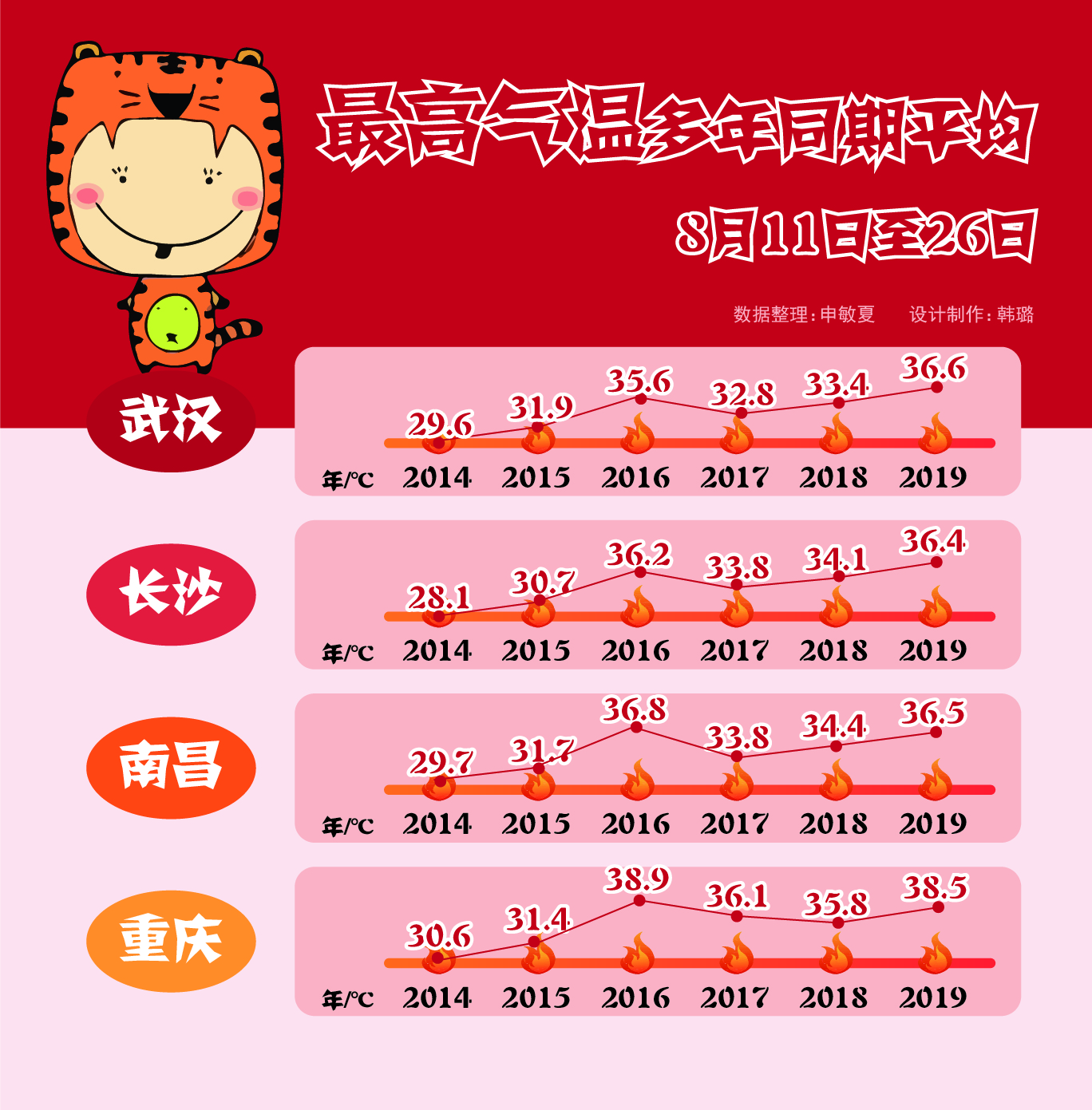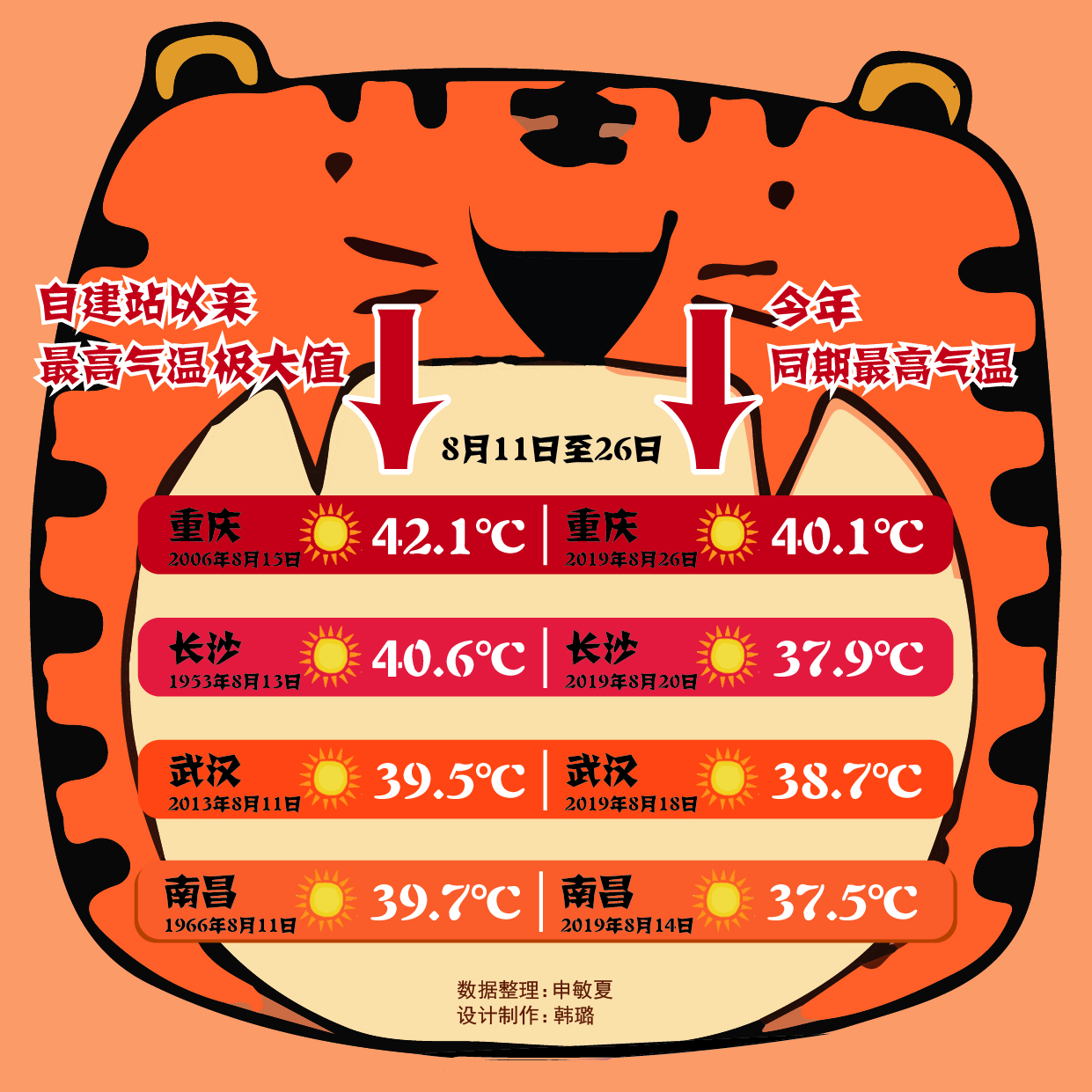On August 26, the Central Meteorological Observatory lifted the yellow high temperature warning for 16 consecutive days, and the autumn in the south has been "delivered" one after another.
Although the overall high temperature range in the country has narrowed and the intensity has weakened, there are still areas in the south that are still in "hot water". Today’s chat column, let’s review, how fierce is this "autumn tiger" going down the mountain?
Expert: Bao Yuanyuan, Senior Engineer of Central Meteorological Observatory
Reporter: China Meteorological News reporter Shen Minxia
8 The longest yellow high temperature warning in August in recent 6 years.
Since August this year, the high temperature in the south has continued to "dominate the screen". Among them, Jiangxi, Hubei, Hunan and Chongqing are continuously controlled by the subtropical high and become the "base camps" of high temperature.
The Central Meteorological Observatory issued a yellow warning of high temperature on August 11, and it was lifted on the evening of August 26, with a total of 16 consecutive days, the longest continuous high temperature days in August in recent six years.

The average value of the highest temperature in August increased as a whole.
Taking Nanchang, Jiangxi, Wuhan, Hubei, Changsha, Hunan and Chongqing as examples, the reporter counted the average of the highest temperatures from August 11 to 26 in the past six years and found that the overall trend continued to rise.

The highest temperature has not yet exceeded the historical extreme.
Since the station was established, the maximum temperature in Chongqing was 42.1℃ from August 11th to August 26th, which appeared on August 15th, 2006. Changsha is 40.6℃, which appeared on August 13th, 1953. Wuhan 39.5℃, which appeared on August 11th, 2013; Nanchang temperature is 39.7℃, which appeared on August 11th, 1966.
At the same time this year, the highest temperature in Chongqing was 40.1℃, which appeared on August 26th. Changsha is 37.9℃, which appeared on August 20th. Wuhan is 38.7℃, which appeared on August 18th. Nanchang is 37.5℃, which appeared on August 14th. The highest temperatures in the four places have not exceeded the historical extreme.

There will be no large-scale high temperature weather in the coming week.
On August 28th, hot weather still appeared in Zhejiang, Fujian, Jiangxi, southern Hunan, Guangdong and other places where the rain did not spread.
However, since August 29th, with the influence of cold air going south and typhoon Yangliu, the "Autumn Tiger" has been "forced back" by cold air and rainfall, and it has been classified as a mountain forest. The overall temperature in the southern region is not high and it is relatively comfortable.
In big cities, Hangzhou and Nanchang were only around 30℃ on the 29th, bidding farewell to the heat, and the highest temperature in Hangzhou will drop to 27℃ in one breath in the next few days under the joint influence of frequent rain washing and cold air going south. In Shanghai and Chongqing, the temperature dropped by 6℃, and the highest temperature was 31℃. The temperature in Wuhan, Nanchang and Changsha dropped by about 5℃ respectively.
(Editor: Su Yujun)
关于作者